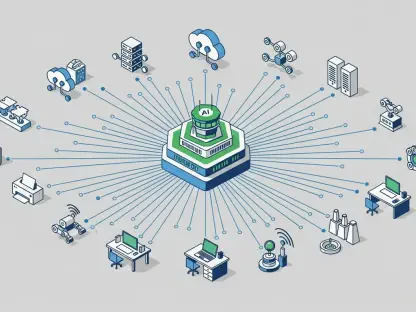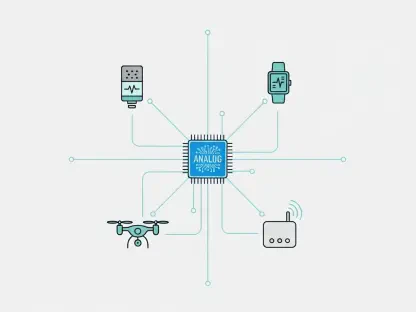In a bustling retail landscape where security challenges and financial losses from theft and failed transactions loom large, a leading Singapore supermarket chain has taken a bold step forward by embracing innovation. Since early last year, this major player in the grocery sector has been rolling out facial recognition technology across its network of stores, aiming to revolutionize how it tackles persistent issues like shoplifting and payment errors. With the system already active in about 50 of its 83 outlets and plans for full implementation underway, the initiative marks a significant shift toward leveraging cutting-edge tech for operational efficiency. This move not only addresses immediate concerns but also sets a precedent for how retailers can adapt to modern challenges. The impact of this technology is already evident, promising a safer shopping environment and reduced financial strain, while sparking curiosity about its broader implications for the industry at large. How this innovation balances security with customer trust remains a key point of interest.
Enhancing Store Security Through Innovation
Facial recognition technology has emerged as a game-changer in combating shoplifting, a persistent issue plaguing retailers worldwide. Previously, store staff relied on manually reviewing hours of security footage to identify suspects, a tedious process that yielded limited results, averaging just four apprehensions per store annually. Now, with the new system in place, faces of suspected shoplifters are flagged automatically, and store managers receive instant alerts when these individuals return. This real-time monitoring has proven highly effective, doubling the number of shoplifters caught to an average of eight per store each year. The data of suspects remains in the system until authorities take action, ensuring a proactive stance against theft. This dramatic improvement highlights how technology can transform traditional security measures into a more dynamic and responsive framework, significantly reducing the risk of repeated offenses in stores.
Beyond apprehending culprits, the technology addresses a broader trend of rising theft incidents across Singapore. Recent data indicates a 4.2% increase in shop theft cases in the first half of the current year compared to the previous period, with over 2,000 incidents reported. This uptick underscores the urgency for retailers to adopt advanced solutions to safeguard their assets. The system’s ability to identify and track individuals in real time offers a robust deterrent, discouraging potential offenders from targeting equipped outlets. Moreover, it frees up staff to focus on customer service rather than exhaustive manual investigations. Supported by initiatives like the Singapore Police Force’s Shop Theft Awareness for Retailers program, this technological advancement reflects a collective effort to modernize retail security. The endorsement from law enforcement further validates its potential to reshape how stores protect themselves against growing threats in an evolving landscape.
Tackling Financial Losses from Payment Failures
Another critical benefit of facial recognition lies in its ability to curb losses from failed payment transactions, an often-overlooked issue in retail operations. Customers sometimes leave stores unaware that their payments, hindered by network glitches or card malfunctions, did not process, resulting in significant monthly losses estimated at around $10,000 across all outlets. With the new system, staff can identify these customers when they return, discreetly addressing the oversight and requesting payment. This approach has slashed losses dramatically to approximately $1,500 per month, showcasing a practical application of the technology beyond traditional security concerns. By integrating this solution into daily operations, the supermarket chain demonstrates a nuanced balance between financial recovery and maintaining positive customer interactions, ensuring that resolving payment issues does not compromise the shopping experience.
This initiative also reveals the dual-purpose potential of facial recognition in retail settings, extending its value to operational efficiency. The discreet handling of payment discrepancies helps preserve customer goodwill while recovering revenue that would otherwise be lost. Transparent communication, such as displaying posters in stores to inform shoppers about the technology, plays a vital role in maintaining trust. This transparency ensures that customers understand the system’s purpose, whether for security or transaction resolution, fostering an environment of accountability. As the rollout continues to all outlets, this multifaceted use of technology could inspire other retailers to explore similar applications. The significant reduction in financial losses serves as a compelling case study for how innovation can address hidden challenges in retail, paving the way for broader adoption across the sector and highlighting the importance of adapting to digital tools in a competitive market.
Setting a Precedent for Retail Modernization
The successful integration of facial recognition technology marked a turning point for this supermarket chain, setting a powerful example for the retail industry in Singapore. The doubled rate of shoplifter apprehensions and the substantial cut in losses from unpaid transactions underscored the system’s effectiveness in addressing real-world challenges. Backed by commendations from senior law enforcement officials, the initiative gained credibility as a model worth emulating. The alignment with national anti-theft programs further amplified its impact, showing how collaboration between retailers and authorities could drive meaningful change. Reflecting on this achievement, the commitment to transparency through in-store notifications also stood out as a key factor in balancing innovation with customer relations.
Looking ahead, the planned expansion to all stores offers an opportunity to refine and scale this approach, potentially influencing industry standards. Retailers facing similar issues might consider investing in such technologies, weighing the benefits against implementation costs. Exploring partnerships with tech providers and law enforcement could further enhance outcomes, ensuring a safer and more financially secure retail environment. As the sector continues to evolve, staying ahead of emerging threats through innovation remains crucial. This case serves as a reminder that proactive measures, supported by data-driven tools, can transform challenges into opportunities for growth and resilience in an increasingly complex marketplace.









